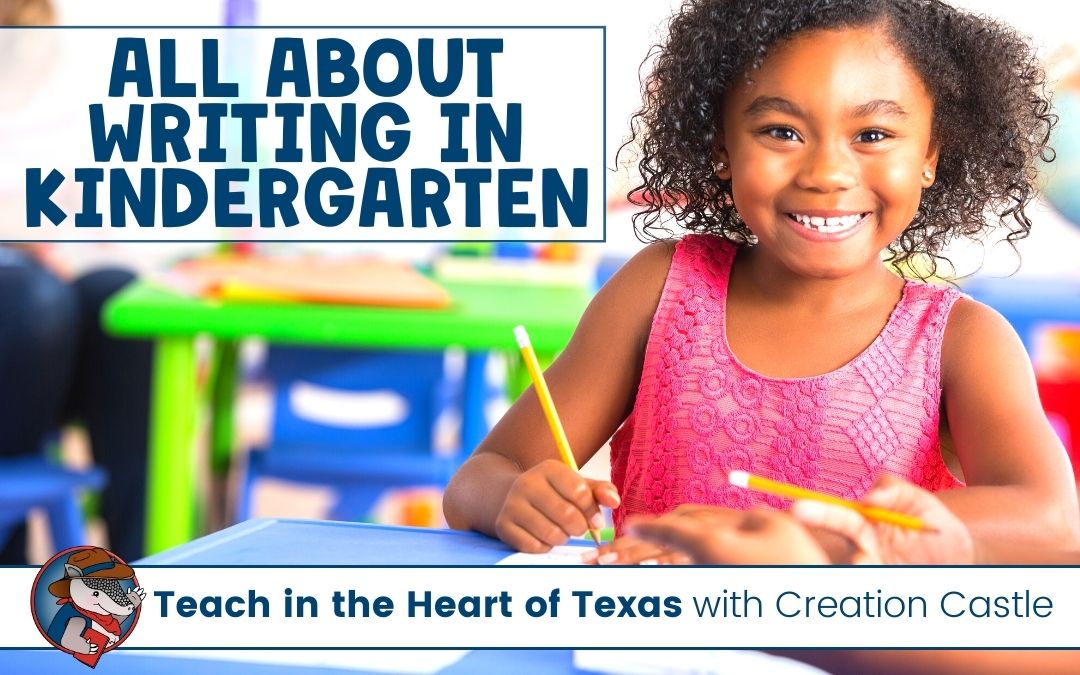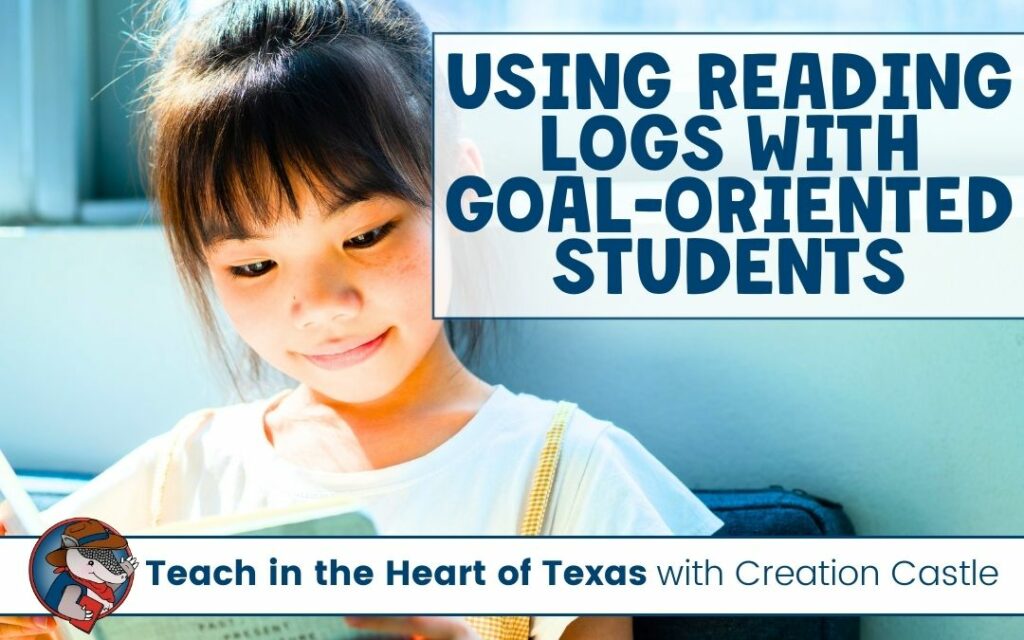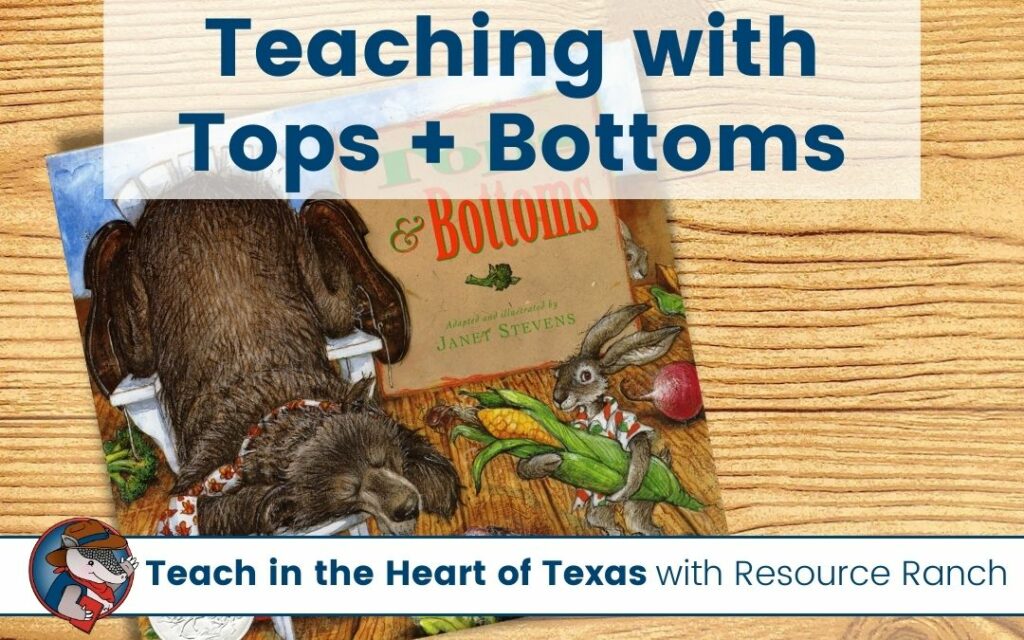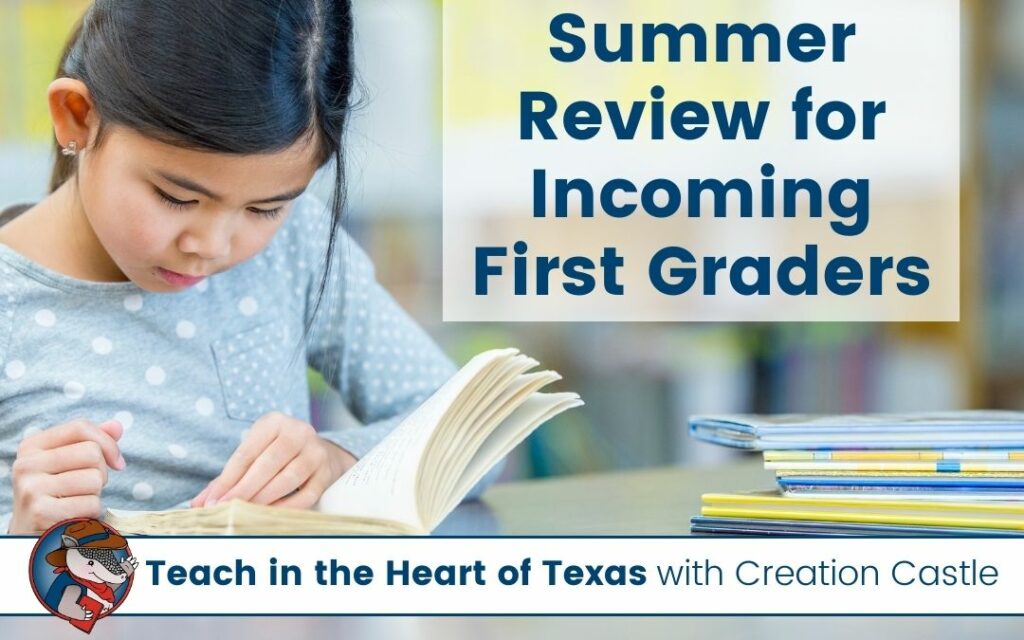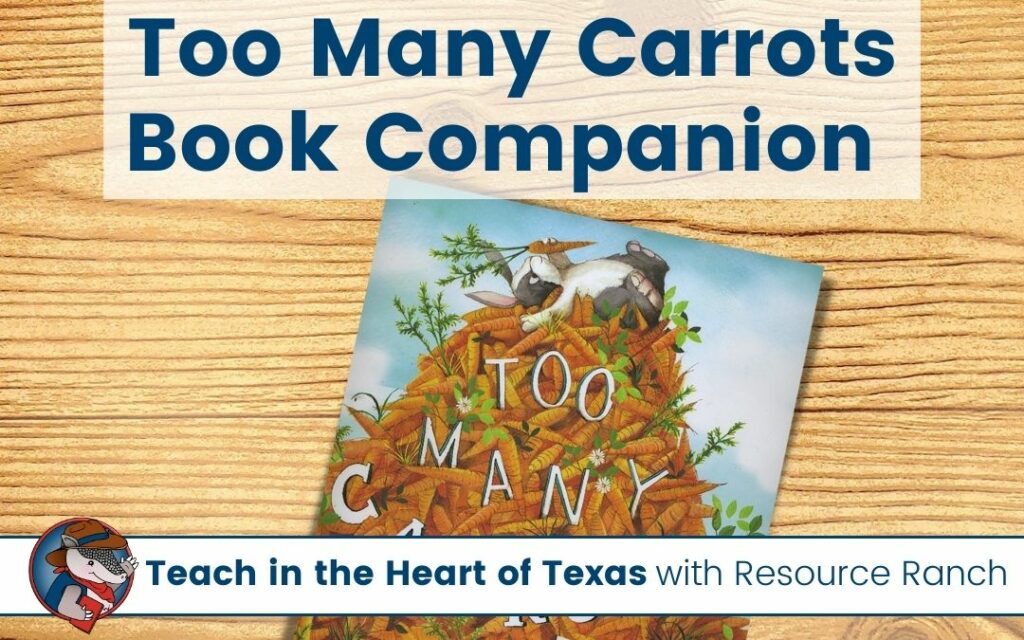Teaching writing in kindergarten is a task that comes with its own set of joys and challenges. As an educator, you witness the budding creativity and imagination of your students, but you also see the hurdles they face when putting pencil to paper and trying to express themselves through writing. Crafting sentences, adding details, and translating their incredible thoughts into words can be particularly difficult for beginning writers.
As a foundational skill, the development of writing skills is crucial. You play a pivotal part in nurturing the seeds of literacy that will blossom into a lifelong love for learning. However, if students feel too challenged or overwhelmed as they begin their writing journey, it can sully their feelings towards the craft forever.
Table of Contents
Why Should You Teach Writing in Kindergarten?
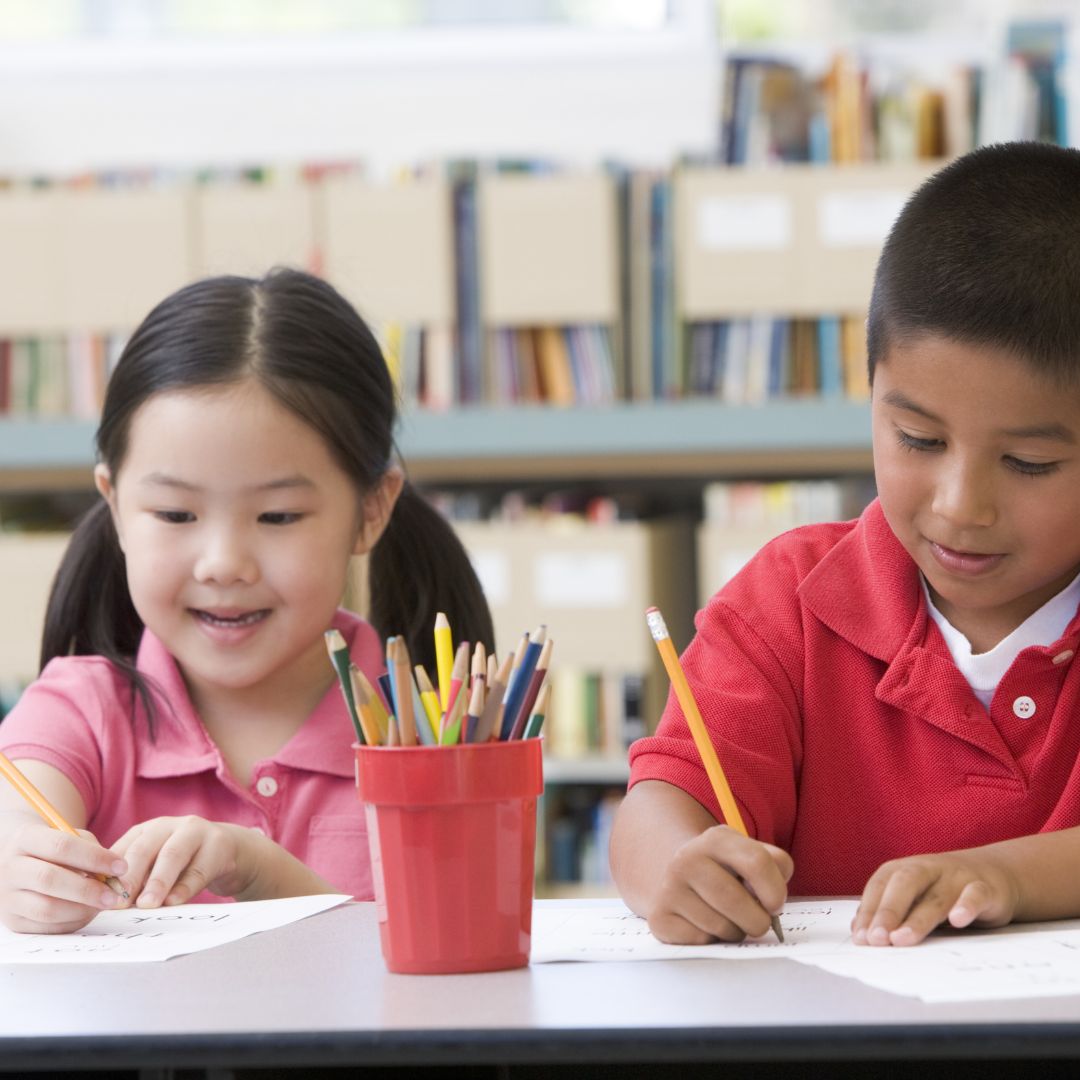
Sure, writing is a required skill for kindergarteners, but it’s more than just putting words on paper. Writing is a simple and effective way to work on other skills that are essential for your students.
Kindergarten is the stage where literacy development takes root. Writing in kindergarten builds foundations and enhances language skills, sparks creativity, and fosters critical thinking.
Beyond mere words, writing becomes a tool for kids to articulate feelings, thoughts, and experiences. It’s about effective communication, even if it’s just getting thoughts onto paper for personal reflection.
Besides the cognitive benefits, writing in kindergarten contributes to the development of fine motor skills. As technology becomes more prevalent, emphasizing these skills becomes crucial.
What Does Writing Look Like in Kindergarten?
At the start of the year, writing may look like emergent scribbles and drawings, but it evolves into a more structured form. Like many other skills, you’ll see exponential growth in your kindergarten students over the course of the school year.
Emergent Writing
Early writing is all about exploration and experimentation. Kids scribble, draw, and create shapes representing their ideas, emphasizing the process over the final product.
Letter Formation and Phonics
The focus gradually shifts to letter recognition, associating them with sounds, and eventually forming simple words. It’s the intertwining of reading and writing skills.
Writing Across Subjects
Confident young writers extend their skills beyond language arts, incorporating writing into various activities like journaling, labeling, and play-based learning.
How Can You Teach Writing in Kindergarten?
Now, let’s talk about practical strategies to teach and support your students.
Create a print-rich environment to immerse your classroom in words and letters, stimulating curiosity. Label different areas and provide various writing materials, creating an environment that fosters interest.
Demonstrate writing behaviors and engage in shared writing experiences. As the year progresses, let students take the lead in shared writing, fostering a supportive environment. When you begin this process, students will need to participate orally, but as their skills and confidence grow, they can help you write letters, words, or phrases on the shared writing. Eventually, you should be able to let students run the shared writing experience.
Tailor your instruction to meet the diverse needs of your students. Some may benefit from hands-on activities, while others respond better to visual aids or auditory cues.
How Can You Identify and Help Struggling Writers in Kindergarten?
Observation is key to identifying struggling writers. Look for signs of frustration, avoidance, or limited progress. Early intervention is crucial for getting students back on track. Strategies might include:
Multi-Sensory Approaches: Engage multiple senses through activities like finger painting or using textured materials for letter formation.
Visual Aids: Use charts, posters, and color-coded systems to reinforce letter recognition and basic writing skills. A print-rich environment comes back into play here. Consider labeling supplies your students will access or add a visual schedule to your board.
Small Group Activities: Create a supportive learning environment through small group activities, fostering collaboration among students. A fun writing activity you could do in small groups is scrambled sentences! Provide students with a sentence cut apart into words. Students can work together to put the sentence in order and then write their completed sentence.
Differentiated Instruction: Find and utilize resources with your students that allow you to meet them where they are. One of my favorite ways to help beginning writers is by introducing them to Draw in the Details. These simple worksheets allow students to build on a simple sentence by adding details to a picture. Then students can expand the original sentence to include more details.
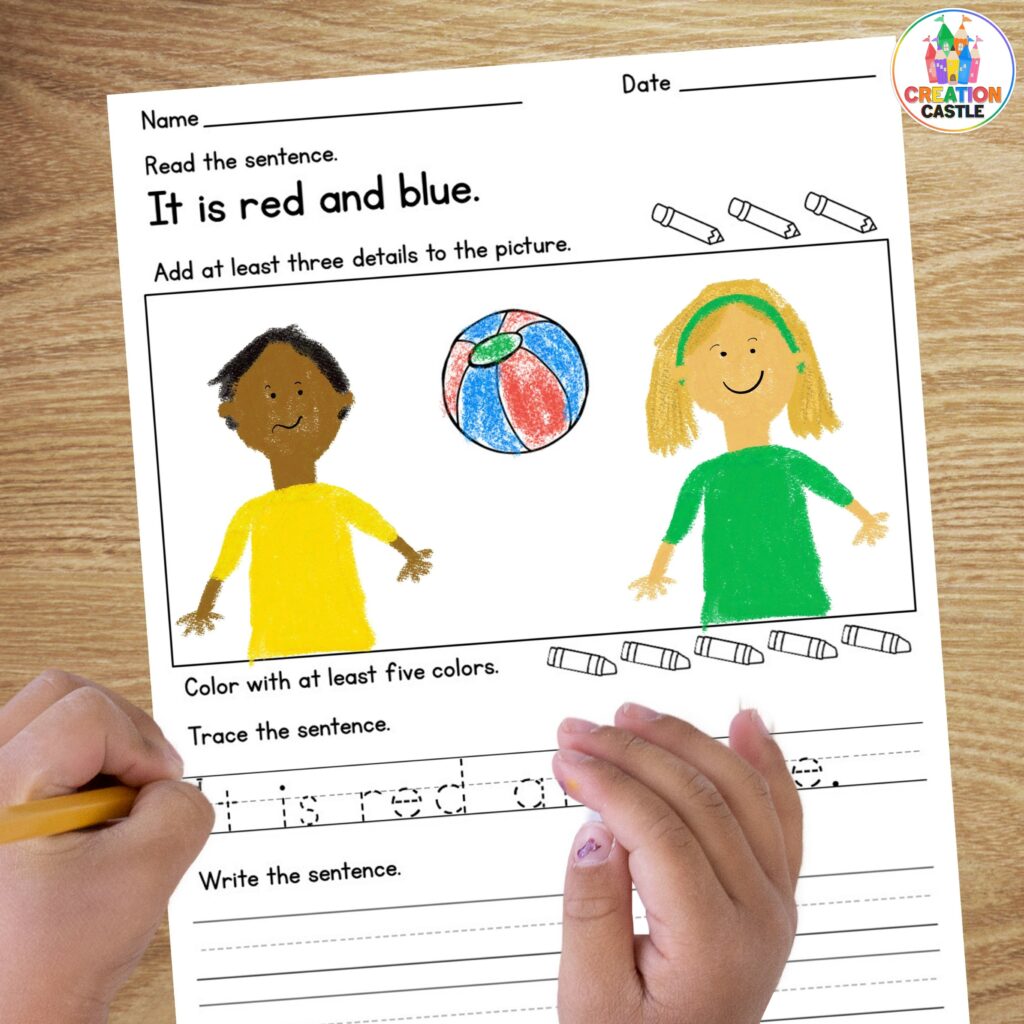
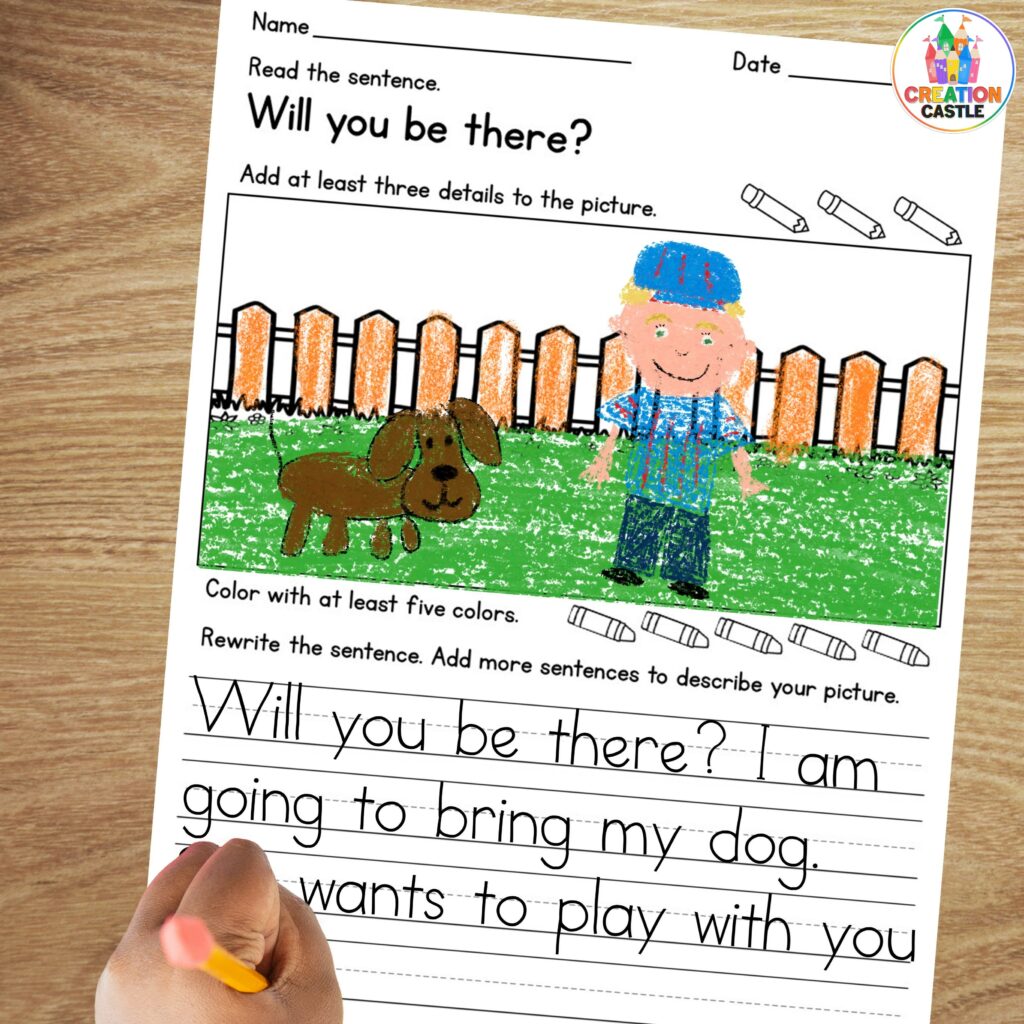
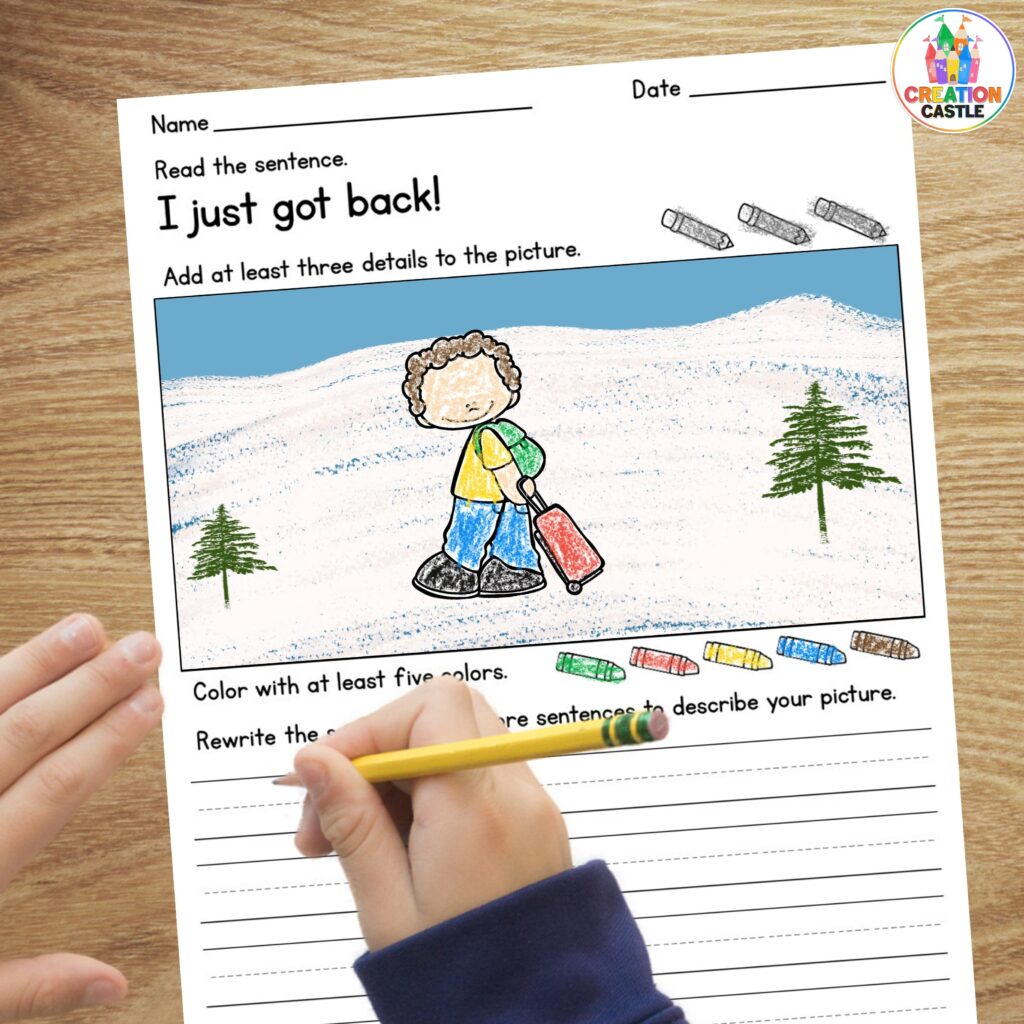
Positive Reinforcement: Celebrate every effort, no matter how small. Positive reinforcement builds confidence and creates a positive association with writing.
Remember, these strategies are adaptable and meant to celebrate the unique journey of each young writer. With patience, encouragement, and a supportive environment, every child can find success in their own time.
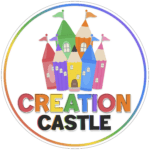
Creation Castle
Heather is the author of Creation Castle. She has experience with general education, special education, and ESL students in kindergarten through fifth grade. She specializes in early elementary math and literacy, as well as organization.

